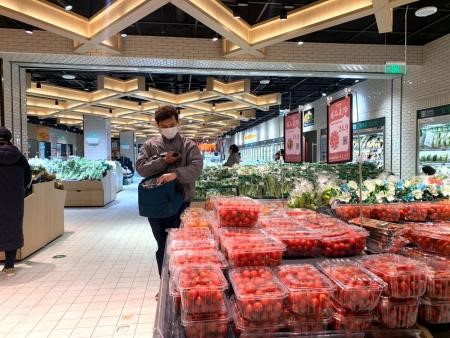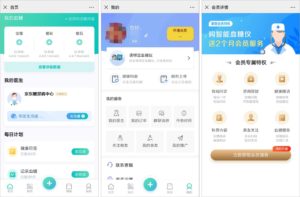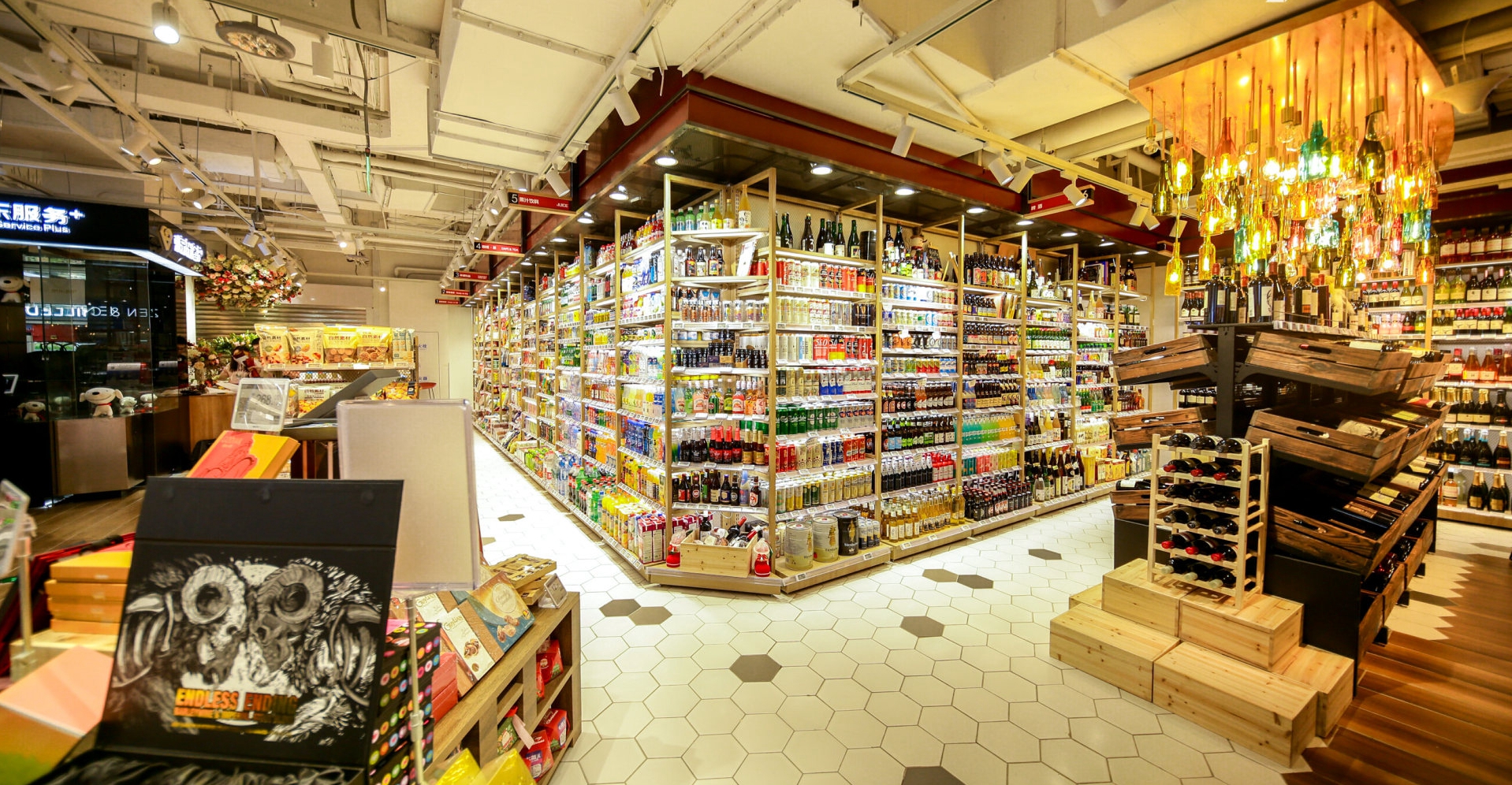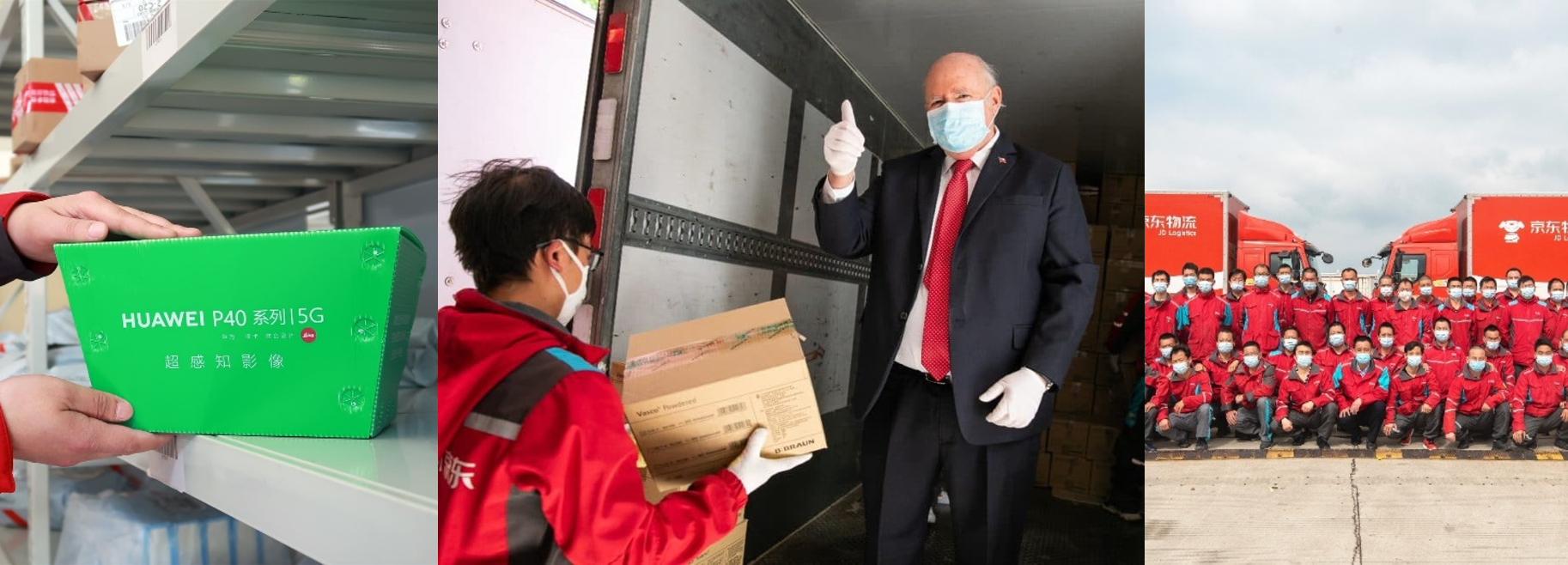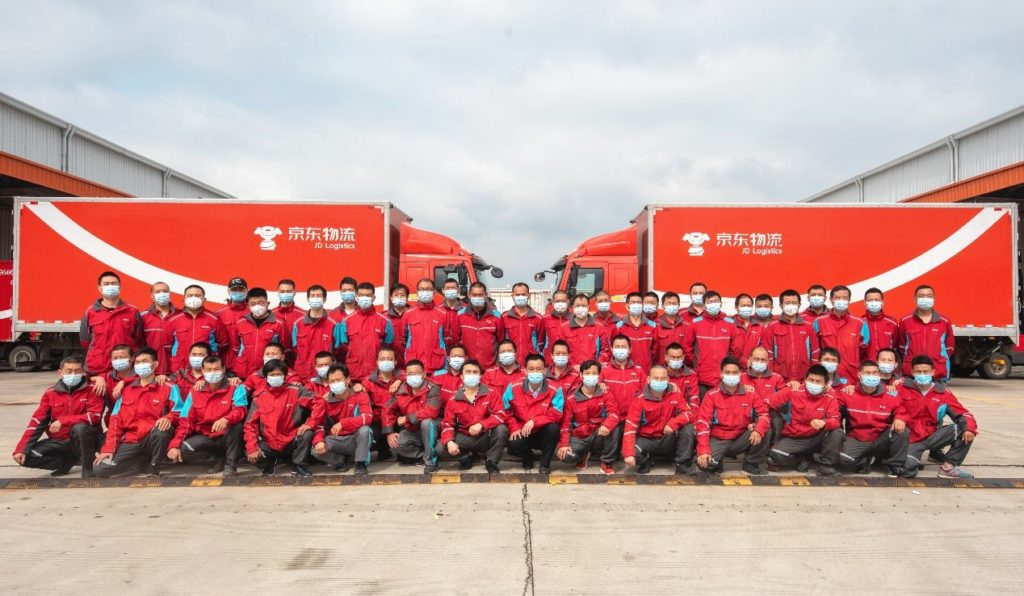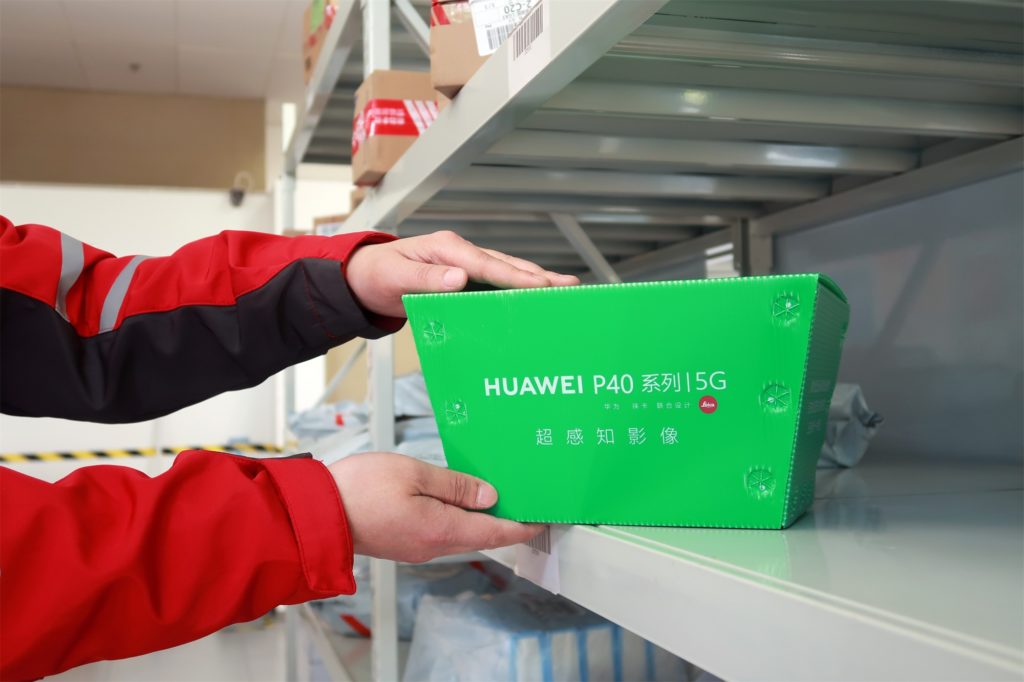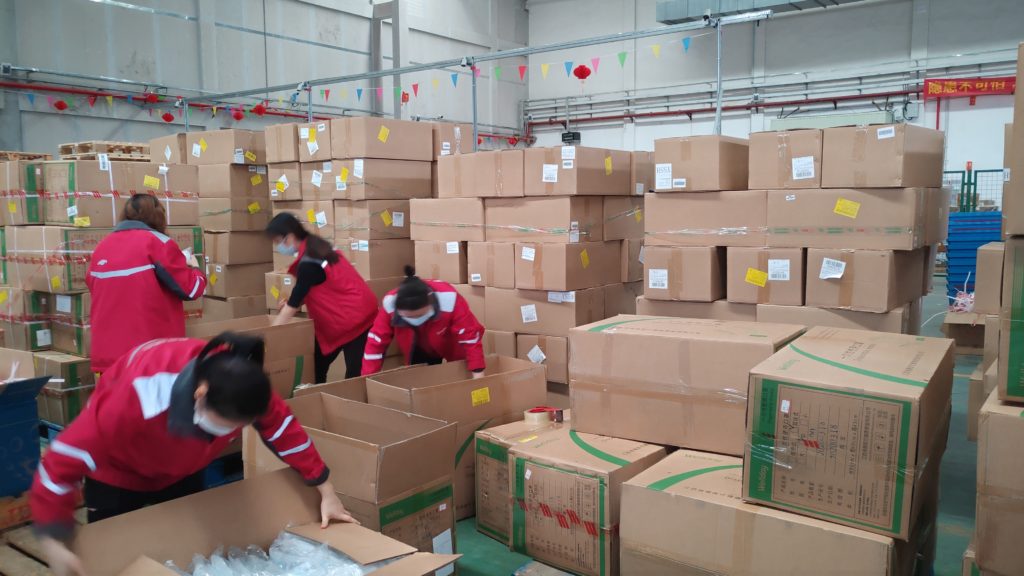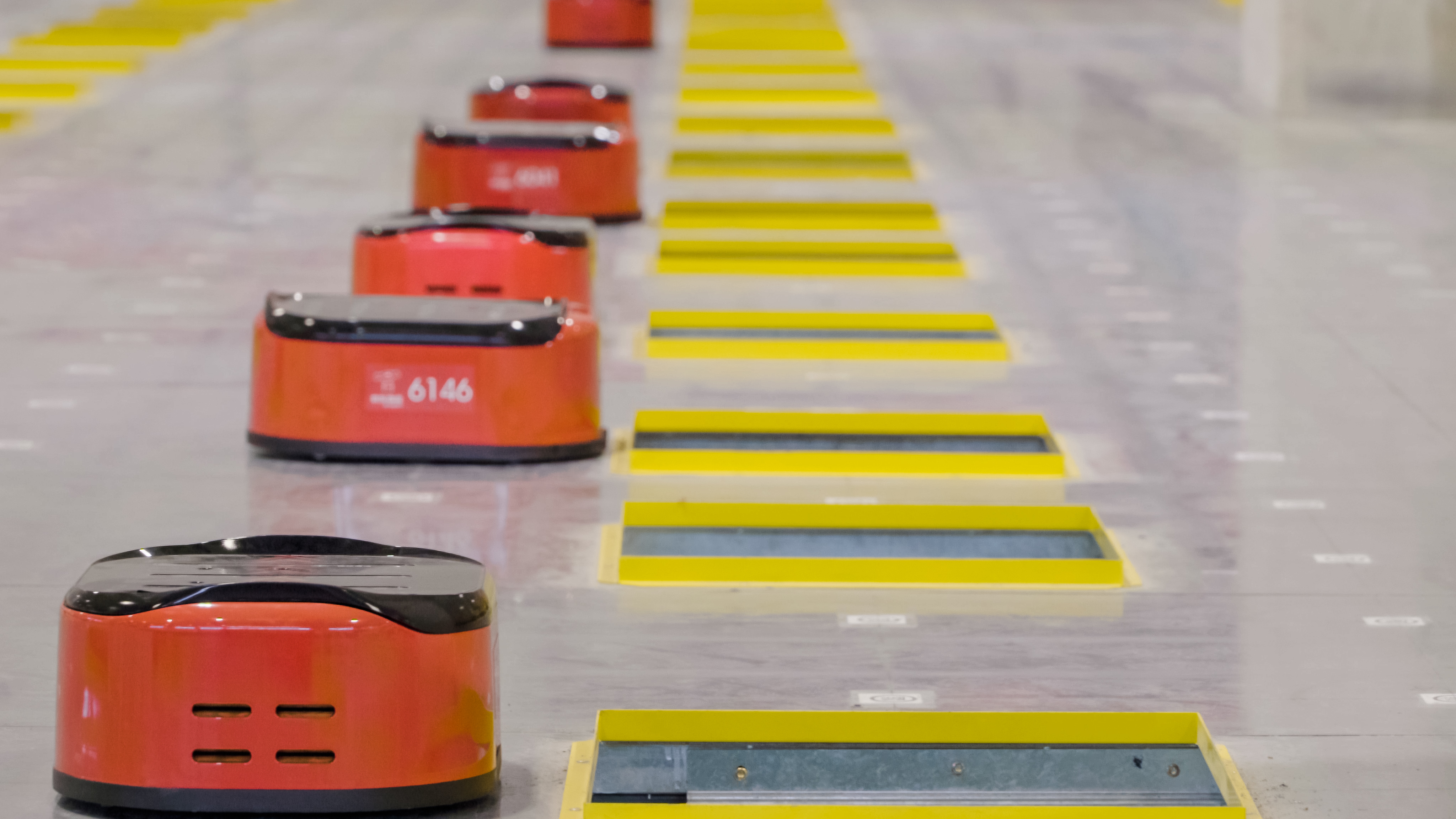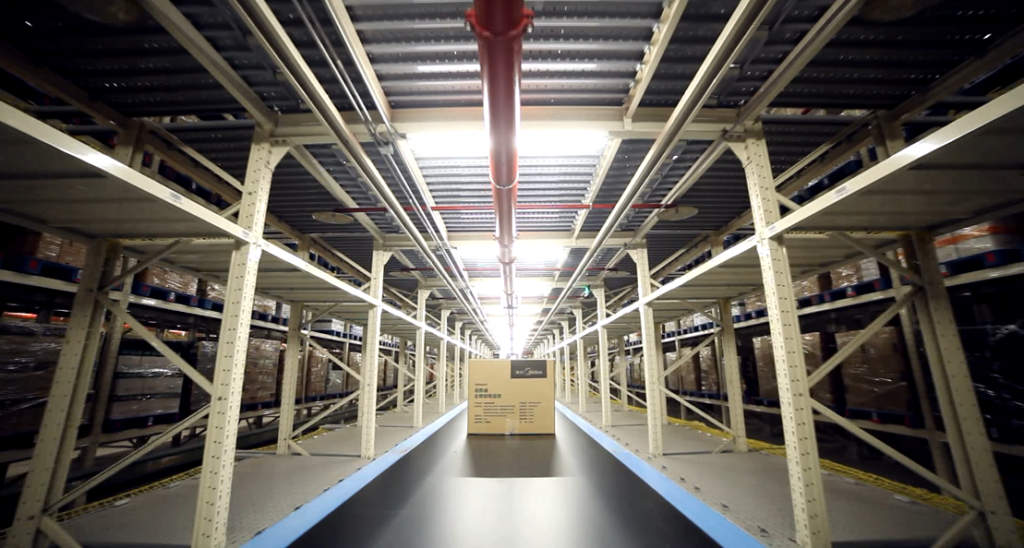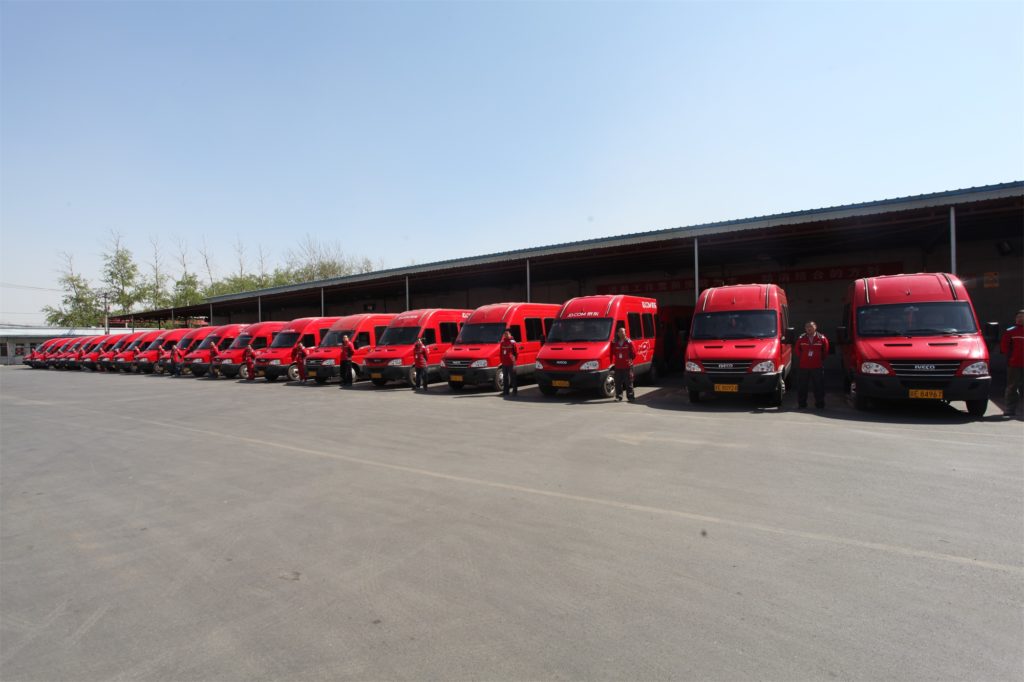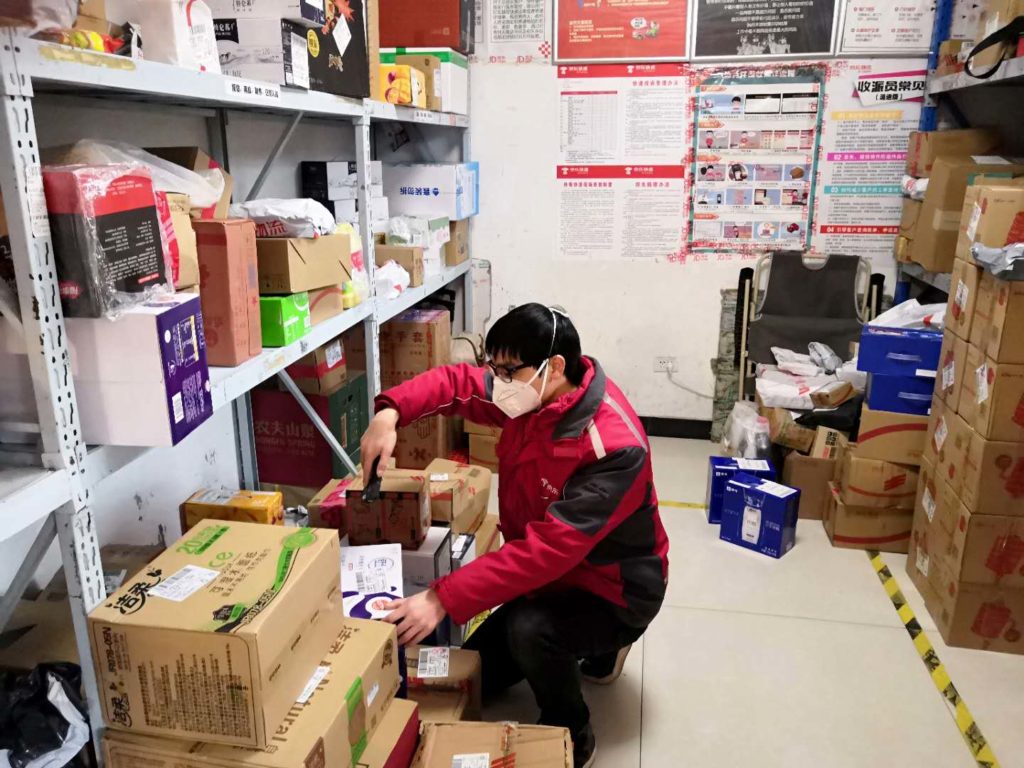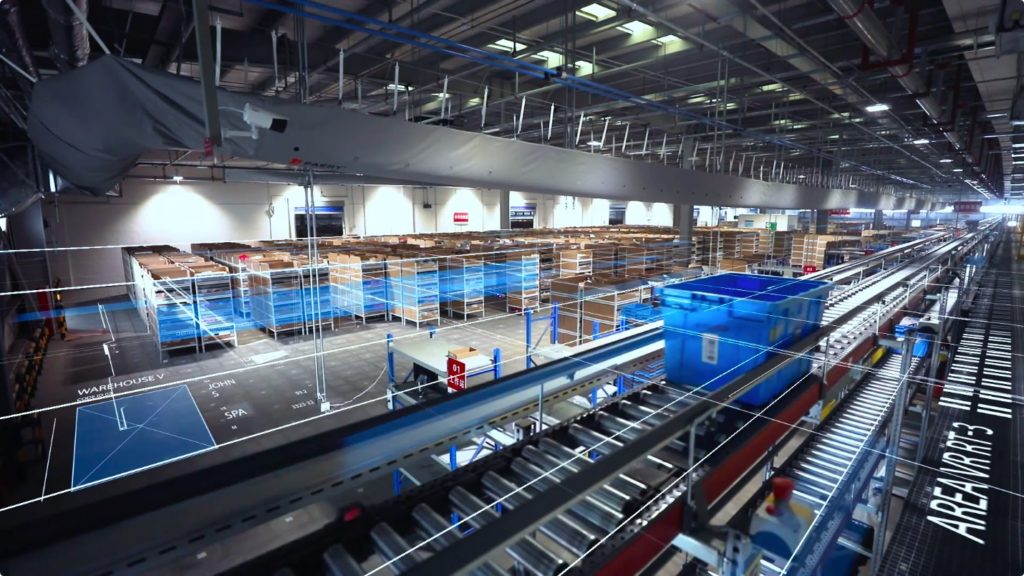by Yuchuan Wang
“The key factors driving global retail transformation are quite simple: channel reformation, store format innovation and supply chain management. China is already leading the global retail industry in channel reformation and digitizing the supply chain, but is still lagging behind the leading players, such as the US and Japan in terms of store innovation.” said Jonathan Wang (王敬), head of 7FRESH, JD’s innovative omnichannel fresh food supermarket business.

Jonathan Wang, Head of 7FRESH, JD.com
China’s retail industry is developing at breakneck speed and is destined to overtake the US as the largest retail market in the world. The size of China’s e-commerce market is larger than that of the US, UK and Japan combined. China’s growing middle class and rich technology application scenarios have acted as attractive catalyst to draw global retail giants like Walmart and Costco as well as local disrupters, including JD.com’s 7FRESH.
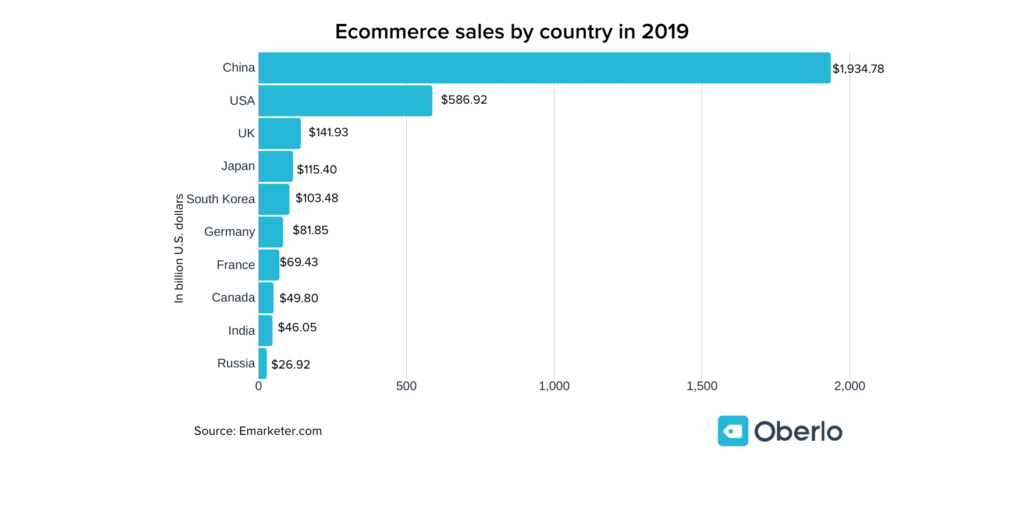
Prior to joining JD.com in August 2018, Wang was a senior vice president at WuMart(物美), a leading retailer in China; a global partner in Roland Berger consulting retail clients; and, acted as the COO of CR Vanguard at CRC(华润) Group, where he helped turn the retailer from loss-making to profitability, ultimately becoming the top retailer in China at that time.
Over two decades ago, Wang was one of just a small handful of Asian faces in Price Club, the offline supermarket chain headquartered in the United States.
He returned to China in late 1990s. It was the perfect time to cut his teeth on the fast growing retail industry, bringing some of the expertise and innovative thinking acquired from abroad to apply in the fertile and welcome soil back home.
In 1997, Wang helped open China’s first Price Smart store in Beijing and acted as the senior commodity director. Stroking his considerable goatee, he reminisces of his time in the US “At that time, most Asian employees were working in stores as clerks, only me and another Korean guy were working in the office since the company was assessing the Asian market.”
Channel reformation
Omnichannel retail is a business model that integrates multiple sales channels to provide a seamless shopping experience. For customers, it means they can get unified services across any channel, at any time and in any circumstances. Wang and his team at 7FRESH are on the very cusp of JD’s omnichannel strategy.
“In China, some omnichannel supermarkets are far more advanced than those of leading Western supermarkets. Many Chinese shoppers today are accustomed to ordering online and getting live and fresh seafood, fruits and vegetables, and other produce delivered to their doorsteps within 30 minutes. This is still far from the norm in most major U.S. cities,” said Wang.
At 7FRESH supermarkets, online orders typically account for 40% to 45% while the proportion reached nearly 70% in February when COVID-19 was peaking in China. The company’s advanced supply chain technology was clearly the lynchpin to provide the superior omnichannel retail experience.
Wang continues, “But if you look at the overall industry in China which is still dominated by traditional offline retailers, their online channel only account for less than 5% overall. That doesn’t mean traditional players do not have omnichannel advantages. Their decades of operational experience in offline retail have provided them with extensive knowledge of their customers, categories, management and operations. What they lack is the technological experience over time. And they don’t know much about online operations. This is where JD’s 7FRESH steps in.”
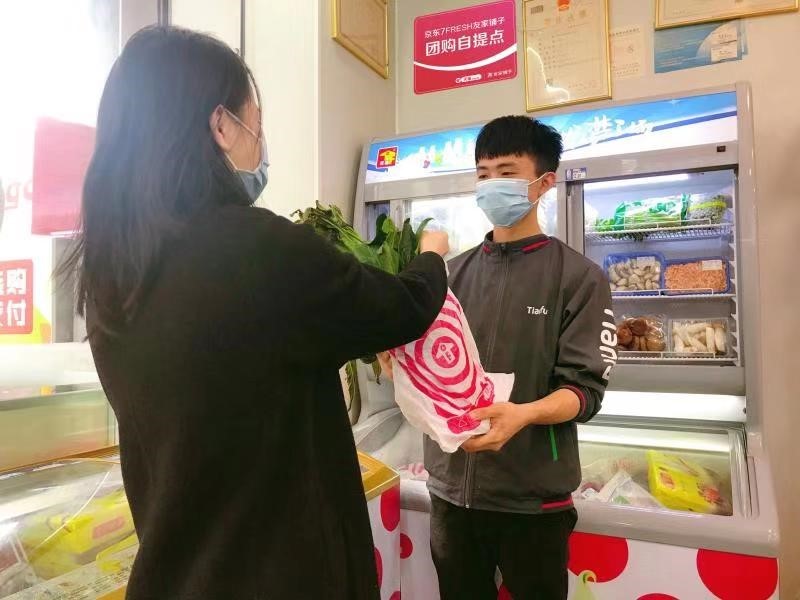
A customer picks up her online order in a Tianfu convenience store in Guangdong province.
Under Wang’s leadership, 7FRESH introduced what he calls the Operation Field Counsel (OFC) partnership model, which enables JD to leverage its considerable strength in retail innovation, supply chain and online operations to provide omnichannel services to regional partners. For example, in a partnership with Tianfu (天福) convenience store chain, a leading Chinese convenience store brand, JD covers nearly 180 Tianfu stores that serve 200 residential compounds in the city of Dongguan, Guangdong province. This enables consumers to place orders through JD’s Friends Shop WeChat mini program and get their orders delivered to the dedicated Tianfu convenience stores in their related residential communities the next day.
Store format innovation
If the online retail arena is about navigating the variety and diversity of opportunity, offline retail is more about store formats.
As China’s middle class continues to expand and consumers subsequently have more disposable income, there is greater hunger for quality. The habits, tastes, expectations and buying patterns of this cohort are also evolving more rapidly than at any other time in recent history.
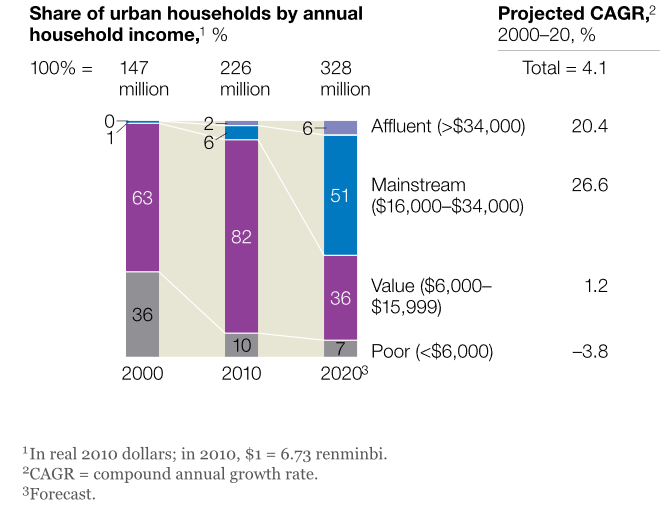
McKinsey: The share of Chinese households in each income level will shift dramatically by 2020
For example, demographic research indicates that busy residents in China’s large cities – including young urban professional singles, couples, and extended families – have both less kitchen space and less time to spend preparing meals. Meanwhile, wholesome options on food choices continue to become available. Last year, Wang promoted his idea of providing meal solutions to address this consumer need. Since then, 7FRESH has been expanding the restaurant areas within stores, allowing more people to sit down and enjoy fresh and delicious meals cooked for them onsite.
Wang attests: “Significantly, we are finding that by offering more everyday meal choices to customers alongside the more traditional grocery and produce items that have helped make 7FRESH a destination for smart shoppers, we are seeing greater traffic, more return customers, higher customer satisfaction and faster paths to profitability.”
“It may be that the retail industry used to be relatively low-key, but since the industry has drawn much greater attention nowadays, people started to become aware of the “sexy” aspect of retail. As a matter of fact, I feel that many of the things happening now have existed in the retail industry for many years. For example, multiple store formats were discussed as early as 18 years ago when I was doing strategic consulting at Roland Berger. ”
Wang and his team have already introduced three advanced store formats, or business models, to the existing 7FRESH brand. These include 7FRESH supermarkets, with an area of several thousand square meters mainly providing fresh food and an in-store restaurant area; 7FRESH LIFE, which is hundreds of square meters in size providing 24/7operations and meal solutions; and SEVEN FUN, targeting working professionals in large cities. It has opened over 20 stores across China in regions including Beijing, Hebei, Shaanxi, Guangdong, Sichuan, etc. It even launched a group buying service for community residents.

SEVEN FUN and 7FRESH Life in Beijing
Supply chain management
JD most recently announced that the company has positioned itself as a technology and service company with supply chain at its core. This capability which requires long-term investment and development has also become JD’s most competitive strength in the rapidly changing market.
Surely, the key undertaking for Wang is to shape the fresh food supply chain. “The length and depth of supply chain determines cost, efficiency and experience, which are the essence of retail,” he shares. “Making the upstream and downstream smooth and shortening the supply chain are particularly important for 7FRESH to drive continuous optimization and development.”
Leveraging JD’s supply chain, 7FRESH is offering extensive and effective supply chain capabilities and methods for fresh food, such as its global direct sourcing program, worldwide buyer network, private labels, consumer-to-manufacturer program, plant factory (hydroponic vegetables) and block chain tracing platform, and others which are of great significance and value for the retail industry.
In addition, Wang and his team believe that the key to the future of retail is to consolidate best practices with IT. The system will help with standardization and technology will help with personalization.
He adds: “Most of 7FRESH’s systems are designed as SaaS systems so that they can be adapted easily and quickly. Thanks to digitization, JD’s 7FRESH supermarket is able to break even within one year and a half. It’s sales efficiency is three times that of a regular supermarket. Establishing 7FRESH is about exploring retail’s best practices, and we wish to share this excellence with the industry to make a positive impact and improve its capacity overall.”
Appendix: Wang’s perspective on retail
- Customer-oriented retail format optimization and innovation are the sources of a retailer’s growth.
- With professional management, establishing and focusing core competitiveness to meet the core values of target customers is an effective means to generate differentiation.
- Only by adhering to simple and standard retail principles can one expand the business rapidly, so as to give full play to the effectiveness of scale.
- Cost-efficiency is the key factor for retailers to win in the long run.
- Only by pursuing supply chain breakthroughs can one become the winner in the retail industry.
- Being good at leveraging core technologies (including management, hardware technologies, etc.) is a precondition for success.
- Successfully bringing about value transfer is the only way to become a leading retailer.
(yuchuan.wang@jd.com)



